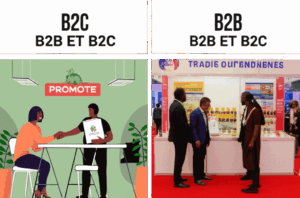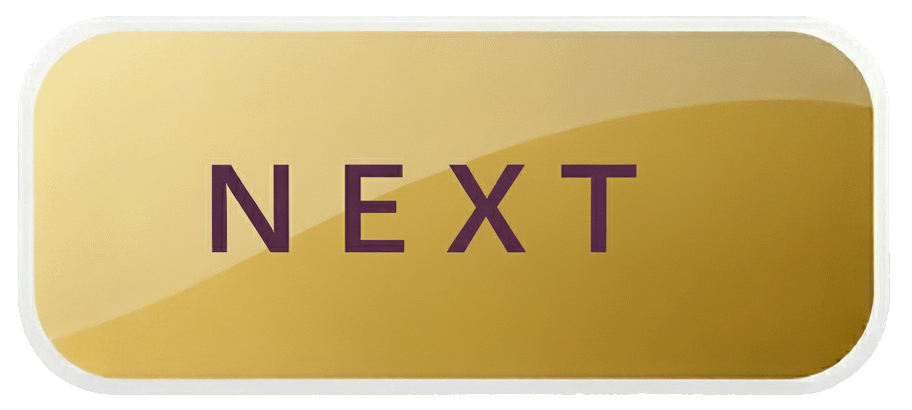The difference between B2B and B2C
Excellent question, because the difference between B2B and B2C is fundamental in marketing and commerce. These terms define the nature of the commercial transaction and, by extension, the strategy to be adopted.
B2B (Business to Business)
Signification :
 ‘Business to Business’, i.e. ‘from business to business’.
‘Business to Business’, i.e. ‘from business to business’.- Definition: This is a business model in which a company sells its products or services to other companies. The customer is not an individual, but an organisation.
- Examples of B2B products/services:
- A raw materials supplier that sells to a factory.
- A communications agency that creates campaigns for other companies.
- A management software publisher that sells licences to SMEs.
- A wholesaler that supplies products to retail stores.
- Key characteristics:
- Target audience: Professionals and decision-makers (buyers, directors, etc.) within a company.
Sales cycle: Generally long and complex. The purchasing decision often involves several people (a purchasing committee) and a rigorous validation process.
Purchase motivation: Mainly rational. The decision is based on return on investment (ROI), profitability, performance, efficiency, and reliability of the product or service.
Customer relationship: Often a long-term relationship based on trust, partnership, and support.
B2C (Business to Consumer) - Meaning: ‘Business to Consumer’, i.e. ‘from business to consumer’.
Definition: This is a business model in which a company sells its products or services directly to end consumers, i.e. individuals.
Examples of B2C products/services:
A supermarket that sells food products to its customers.
A clothing store that sells to individuals.
An e-commerce site that sells books, cosmetics or gadgets.
A restaurant that offers meals to its customers.
Key characteristics: - Cible : Le grand public, les particuliers.
- Cycle de vente : Généralement court. Les achats peuvent être impulsifs ou réfléchis, mais le processus est plus rapide car la décision est prise par une seule personne (ou une famille).
- Motivation d’achat : Souvent émotionnelle. L’achat est influencé par la marque, le prix, la publicité, les tendances, l’expérience client et les besoins personnels.
- Relation client : Plus transactionnelle. Les interactions sont plus nombreuses, mais le lien peut être moins profond qu’en B2B. L’enjeu est de séduire un large public pour générer un grand volume de ventes.

